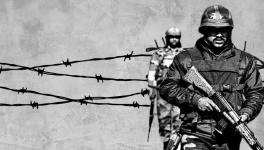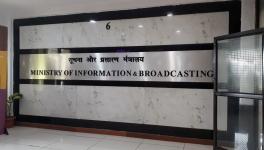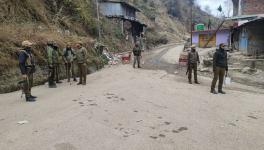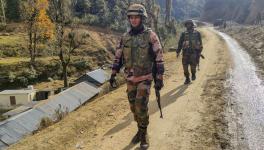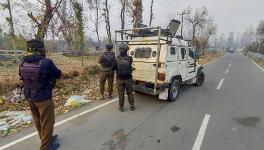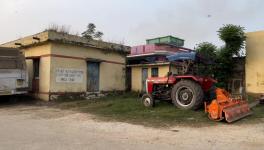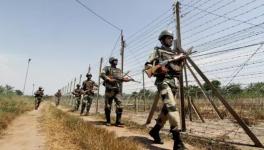The Kashmir Question: A ‘Made in India’ Problem
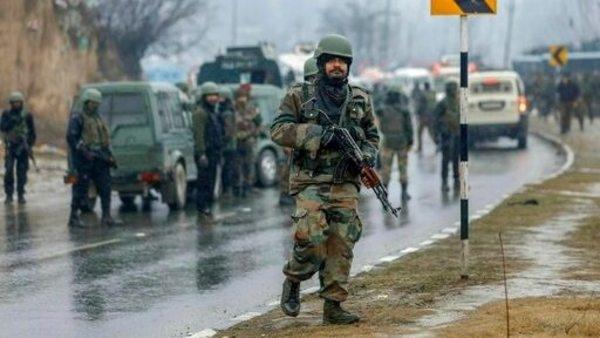
Image Coutesy: Livemint
It has been stated earlier that when there is no political will to resolve a long pending dispute then ‘all roads can lead to hell’. The loss of at least 40 CRPF soldiers’ lives in a suicide attack in Pulwama augurs ill. Despite the massive military and security apparatus deployed in Jammu and Kashmir, no one had any clue that a suicide bombing was in the making. Vappala Balachandran, a former special secretary, Research and Analysis Wing, recently wrote that “(h)uman intelligence has always been an issue in J&K” and that particularly since the Narendra Modi sarkar (government) took over in 2014, the “alienation of the youth” has risen. Kashmir, he says, has become a “classic case of home-grown insurgency when the public started obstructing security forces during their operations.
India, tragically, lost the plot when post-1992, the annual report of the Ministry of Home Affairs began spinning a narrative of Pakistan-is-the-main-reason for everything going wrong in Jammu and Kashmir and thus came into being the refrain of ‘cross-border-terrorism’. This was meant to absolve successive Indian governments of any blame for causing the conflict in the first place by gradually eroding the constitutionally guaranteed autonomy, and then fanning discontent with every new mis-step -- corrupt and coercive. All this paved the way for Pakistan to ‘fish in troubled waters’.
Indeed, by ignoring popular disenchantment on the ground and refusing to address it politically, the Indian government has none but itself to blame. Fifteen years after Jaish-e-Mohammed (JeM) was forced to cease suicide attacks, this time round it revived itself by attracting a section of local militants to it who were willing to graduate to becoming suicide bombers. JeM introduced suicide bombing to J&K in 1999. Recall JeM leader, Masood Azhar, who India seeks desperately, was arrested by Indian police in 1994. He was released in 1999, dropping all charges against him, by the Bharatiya Janata Party-led National Democratic Alliance-I government in exchange for Indian Airlines IC 814 passengers held hostage by JeM.
New Lease of Life
JeM, which had become dormant by 2003, revived under NDA-II, which provided a new lease of life it, particularly after July 8, 2016, helped by the Indian Army’s reckless recourse to ‘Operation All Out’, which was meant to crush the movement for ‘Aazaadi’. What we have instead is a rise in local militancy and, even more remarkably, widespread support for it from the people who are frustrated and disenchanted with the Modi Sarkar’s refusal to initiate any political effort to resolve it.
The Modi sarkar’s muscular approach was compounded by its active support to mainstream Hindutva groups, which were allowed a free run in the “Disturbed” Jammu region, and in the rest of the country. While many find their voice to speak of radicalisation of Kashmiri youth, there is a criminal silence over officially-encouraged Hindutva radicalisation taking place across India. The combination of lynchings, vigilante activities together with the shrill demand for doing away with the last vestige of J&K’s autonomy by doing away with “state subjecthood” and vilifying Kashmiri Muslims (as they do with Indian Muslims in rest of the country), have helped obfuscate real issues. One fallout of this is the organised attacks on Kashmiris living, working and studying in different parts of India, made worse by open patronage offered by police and administration. In a manner of speaking, all of them have helped JeM realise its goal of turning Indians against Kashmiris.
True, after Parliament was attacked in 2001, Kashmiris became targets of people’s anger and experienced hostility in their daily lives. But it did not take a turn for organised mob attacks, with state governments looking the other way in several parts of North India, especially in BJP-ruled states. It is worth remembering that rarely in the three decades of insurgency in Kashmir has there been in India an outpouring of grief at the massacres of civilians at the hands of Indian security forces, or against people killed for reward and promotion, youths blinded by pellets or tens of thousands detained and arrested under draconian laws. It is as though Indians only care for deaths of soldiers, not of civilians, who happen to be fellow citizens.
Don’t belittle the loss of lives
If we really care and are concerned over the loss of lives of CRPF personnel then it would be worth our while to be concerned about the impact of prolonged military deployment in J&K on the morale of the personnel who cannot remain alert or vigilant day-after-day, month-after-month, year-after-year, as they can in short duration operations. Moreover, if in three decades there has been no military solution to the Kashmir dispute, then why persist with the approach? Perhaps now is the best time to ask if a problem that has defied military solution needs to be replaced by serious and sincere political initiative. Or else, witness what is happening where soldiers became mere pawns for the Hindutva rabble-rousers to carry out their incendiary politics. Consider what happened in Jammu after the Pulwama attack.
J&K is being ruled since the past eight months by New Delhi, first under Governor’s rule and now under President’s rule. The entire state has been declared a “Disturbed Area” since October 1990 with extr-ordinary laws and extraordinary legal immunity for security force personnel. Yet, for four days from February 14-18, Hindutva mobs, despite curfew, could gather and move around freely attacking Kashmiri and Jammu Muslims, destroying properties, vehicles and shops. Even Army flag marches did not deter these mobsters, knowing fully well that no harm will come to them since the administration patronises such elements.
It is known that police open fire on protestors at the drop of a hat. But, rarely has this been done against Hindutva mobsters, even when they are mounting murderous attacks. In Uttarakhand, a BJP-ruled state, Kashmiri students were targeted, threatened and forced to leave Dehradun mid-way through their studies. The Uttarakhand Police showed its Hindutva proclivities, in violation of the Constitution they were expected to uphold, when they selectively filed cases against Kashmiri Muslims for posting their views charging them with sedition and other penal provisions, whereas blood curdling posters, leaflets, hate speeches by Hindutva mobsters and their leaders were allowed a free run.
The long and short of it is that if there is no place for people of Kashmir in India, and this is the message being driven across, then its futile to blame Pakistan.
The way out of this mess
So, what can be done to reverse the process? Should India not work to teach Pakistan a lesson, because JeM is an asset of the deep state in Pakistan? The trouble is that India’s options are limited.
Take diplomacy, for instance. A week before the suicide attack in Pulwama, India’s Foreign Minister told Lok Sabha that India had successfully isolated Pakistan. Around the same time, 46 countries gathered in Pakistan to participate in a five-day naval exercise. Post-Pulwama, when the Crown Prince of Saudi Arabia, Mohammaed bin Salman, visited Pakistan, prior to his trip to India, not only did the Saudis sign seven MoUs valued at $20 billion but in the joint statement, the two also criticised the politicisation of “UN listing regime”, which was clear rebuff to Indian attempts to get Pakistan declared a state sponsor of terrorism and get JeM listed by the Financial Action Task Force. No more than three countries mentioned Pakistan by name in their support for India after the suicide bombing. In fact, India’s all-party resolution itself failed to mention Pakistan or JeM. China’s Global Times reminded India that before rushing to criticise China and Pakistan “shouldn’t the Indian government make more self-introspection on its anti-terror policy and dwell more on how to better administer the Indian controlled part of Kashmir?”
The point is that this escalation is in step with ‘Operation All Out’. And each step which is taken begets a stepped-up counter-response. With general elections round the corner and BJP desperate to cash in on jingoism and war hysteria, it will certainly push for something that can be packaged as a ‘resolute’ response. So, while we wait to see what happens, we need to keep certain imponderables in mind. In September 2016, when the so-called ‘surgical strike’ was undertaken in which a temporary launching pad of militants was destroyed and 39 persons killed, the DG Military Operations promptly informed his counter-part in Pakistan that this was a one-off attack. Why did they do so? Because India could not afford the conflict escalating into combat between the two armies. This was true then, as it is today. Especially against the backdrop of the role Pakistan is today playing in the resolution of the Afghan conflict to save the US from the ignominy of a pull-out reminiscent of a Saigon-like debacle in 1973.
So, we need to draw the right lesson from Pulwama. Suicide attacks will increase unless the Government changes tack in J&K. With Hizbul Mujahideen also coming out in favour of suicide attacks, the future is fraught with danger. To carry on with a failed military approach is to be unwise. There is no crown attached to a policy which shows all signs of failure. India needs to cut loose from such policies. It needs to be acknowledged that although counter-insurgency is a military doctrine, it is political initiative that brings it to an end, especially where our own people are concerned.
A military solution in which the Army is fighting against people in its own backyard requires stationing a huge force for Area Dominance. For instance, CRPF has 61 battalions, 70,000 personnel living in 600 camps in J&K. The size of army deployment is four times that. The Army Chief claims that Army’s “rules of engagement are very people friendly and we conduct our operations in a very people friendly manner”. The question is how “friendly” are Cordon and Search Operations being carried out in harsh winter months, when youths are chased, houses blown up, persons booked under draconian laws, detainees shifted to jails outside J&K, making visits by friends and relatives expensive and difficult. There is nothing ‘friendly’ in keeping leaders under house arrest, curbing their space to connect with people, and exposing Kashmiris living outside J&K to attacks by Right wing Hindutva rowdies.
True, the Army cannot be blamed for what happens outside the theatre of conflict. But one has yet to come across Army officers in J&K publicly chastising Right wing Hindutva outfits. Under their very nose, when an eight-year old Bakarwal girl was raped, tortured and killed in Jammu region and Hindutva rabble rousers went on the rampage, Army commanders kept quiet, “Disturbed” area and AFSPA notwithstanding. The Army brass cannot shirk its share of blame for engaging in selective concern over radicalisation by Islamists but never over Hindutva fanaticism.
What next?
However, there is little likelihood of BJP changing tack. Not only because of the upcoming general elections, but also because BJP is ideologically ill-equipped to attach any premium on enlightened self-interest. Besides, the Prime Minister does not believe in taking advice from anyone on J&K; after all the ‘leader’ knows all.
Moreover, given the proclivity of BJP to play hard, it is quite possible that they will opt for a military response. However, unless this military response is stage managed like the ‘surgical strike’ was between the DGMOs of India and Pakistan, there is no gainsaying that such strike/s can go terribly wrong. But that’s a risk a desperate BJP, which is fast losing popularity, is sure to take.
As a result, the ground situation will deteriorate. With militants taking to suicide attacks, Indian military will become more ferocious in its counter-insurgency operations and public opinion will swing between distress and despair. India’s inability to resolve disputes of its own making will always bring it to an inflexion point where the Kashmir Question is concerned – making it a perfect “Made in India” problem.
Get the latest reports & analysis with people's perspective on Protests, movements & deep analytical videos, discussions of the current affairs in your Telegram app. Subscribe to NewsClick's Telegram channel & get Real-Time updates on stories, as they get published on our website.









